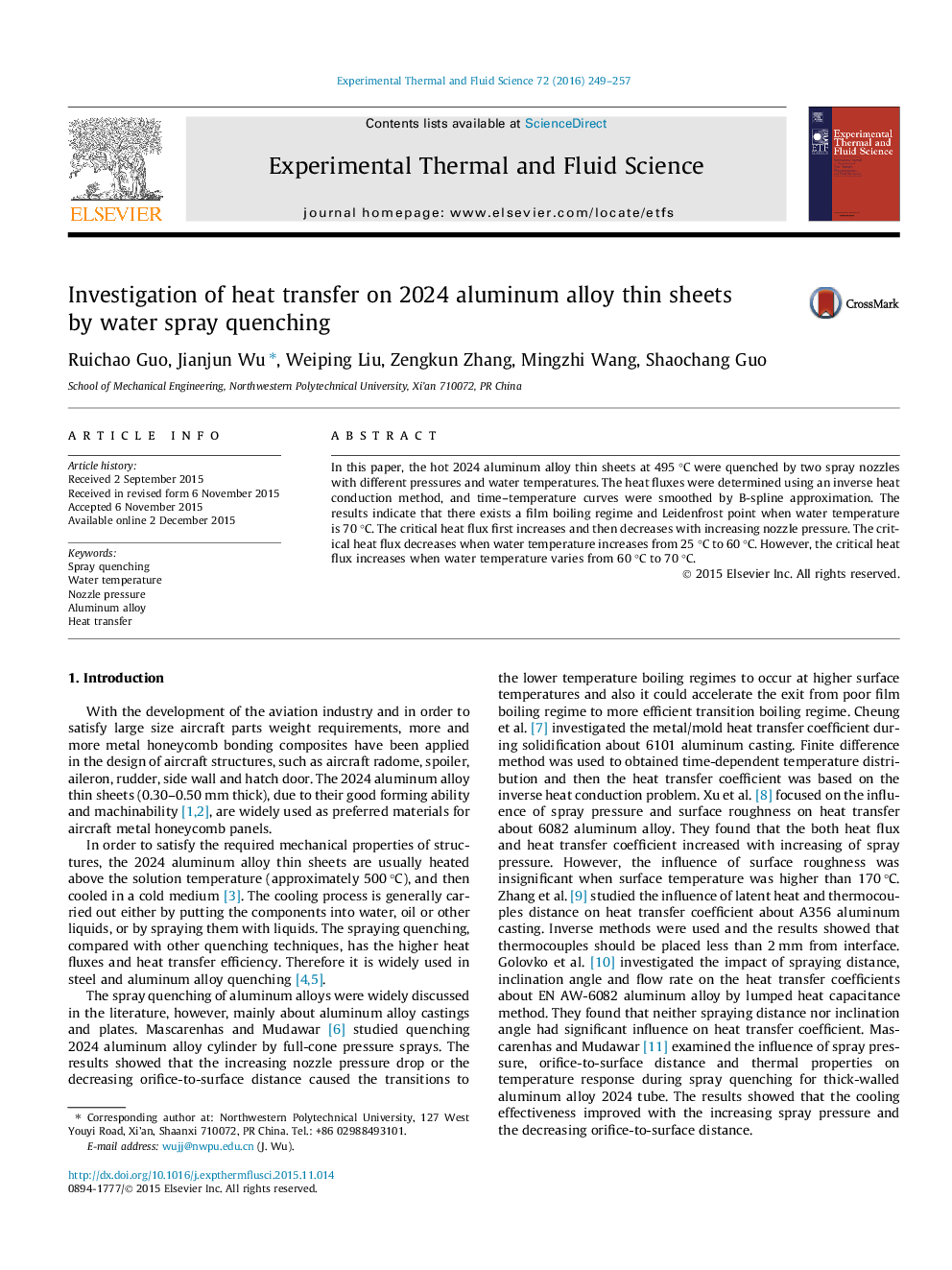| Article ID | Journal | Published Year | Pages | File Type |
|---|---|---|---|---|
| 651178 | Experimental Thermal and Fluid Science | 2016 | 9 Pages |
•Time–temperature data are smoothed by B-spline approximation.•When water temperature is less than 65 °C, there is no film boiling. However, there exists a Leidenfrost point at 70 °C.•When the water temperature is 25 °C, the critical heat flux first increases and then decreases with increasing nozzle pressure.•At nozzle pressure of 3 bar, the critical heat flux decreases and then increases when water temperature varies from 25 °C to 70 °C.
In this paper, the hot 2024 aluminum alloy thin sheets at 495 °C were quenched by two spray nozzles with different pressures and water temperatures. The heat fluxes were determined using an inverse heat conduction method, and time–temperature curves were smoothed by B-spline approximation. The results indicate that there exists a film boiling regime and Leidenfrost point when water temperature is 70 °C. The critical heat flux first increases and then decreases with increasing nozzle pressure. The critical heat flux decreases when water temperature increases from 25 °C to 60 °C. However, the critical heat flux increases when water temperature varies from 60 °C to 70 °C.
Graphical abstractSchematic diagram of the water spray quenching system.Figure optionsDownload full-size imageDownload as PowerPoint slide
